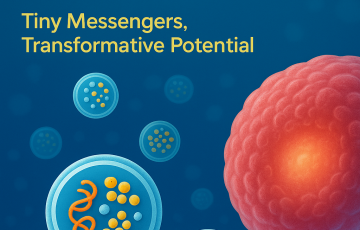
Botox & Anti-WrinkleTreatment
Dermal Fillers
Skin Boosters
Microneedling & Growth Factors
Minor surgery
Blood tests
Wellness Treatments
Training & Mentoring
Dr. Apul Parikh, MBChB, MRCS, EBOPRAS
Plastic, Reconstructive & Aesthetic Surgeon | London Victoria
Expert in Exosome-Based Regenerative Aesthetic Medicine
About Dr. Apul Parikh
Dr. Apul Parikh is a highly respected plastic, reconstructive, and aesthetic surgeon based in London Victoria, known for combining surgical precision with the latest innovations in regenerative aesthetic medicine. With over 20 years of experience and certification from the European Board of Plastic Surgery (EBOPRAS), Dr. Parikh specialises in natural, long-lasting results using advanced, science-backed techniques.
He is widely recognised as one of the UK’s leading exosome aesthetic experts, pioneering the integration of exosome therapy into facial rejuvenation and skin regeneration protocols.
Key Areas of Expertise
Facial Aesthetics – Advanced anti-wrinkle injections, dermal fillers, skin boosters, microneedling, and facial contouring.
Minor Surgical Procedures – Upper eyelid surgery (blepharoplasty), mole and cyst removal, skin cancer excision, split earlobe repair.
Regenerative Aesthetic Medicine – Leading UK practitioner in exosome skin rejuvenation and collagen stimulation treatments.
Wellness & Longevity – Mental wellness consultations, bespoke blood testing, and integrative health planning.
Pioneer in Exosome-Based Aesthetics
As one of the UK’s foremost regenerative aesthetic medicine specialists, Dr. Parikh has been at the forefront of introducing exosome technology to enhance skin quality, hydration, and elasticity.
In March 2025, he delivered a keynote at the 15th UK Regenerative Aesthetic ExoCoBio Summit at the Royal Society of Medicine, where he presented on exosome manufacturing standards, purity, and clinical outcomes. His London clinic offers ExoCoBio and AnteAGE exosome therapies, often combined with microneedling or biostimulatory injectables such as HArmonyCa, to achieve superior regenerative results.
Dr. Parikh’s expertise also extends to plant-derived exosomes, such as rose-derived formulations, which he integrates into advanced anti-ageing protocols for patients seeking natural skin regeneration without downtime.
Training & Leadership
Faculty Member, Allergan Medical Institute – International trainer in Botox® and dermal filler techniques.
Lecturer, University College London (UCL) – Training the next generation of aesthetic practitioners.
Consultant to pharmaceutical and device companies for product innovation and education.
Recognition & Awards
Founder of an award-winning clinic in Victoria, London – “Most Trusted Medical & Cosmetic Skin Clinic UK 2025”.
Regularly featured in leading aesthetics publications and media outlets.
Committed to medical education and global speaking engagements on aesthetic innovation and regenerative medicine.
Why Choose Dr. Apul Parikh
Innovator in Exosome Treatments – Early adopter and key opinion leader in exosome-based skin rejuvenation.
Comprehensive Expertise – Combining surgical skill, aesthetic artistry, and regenerative science.
Patient-Centred Approach – Every treatment is tailored for safety, subtlety, and natural results.
Recognised Authority – Trusted by patients, peers, and industry leaders in the UK and internationally.
MBChB, MRCS, EBOPRAS
Botox & Anti-WrinkleTreatment
Dermal Fillers
Skin Boosters
Microneedling & Growth Factors
Minor surgery
Blood tests
Wellness Treatments
Training & Mentoring
V300 Nurse prescribing course for Aesthetics
English

Yes. In the UK, it's illegal to administer Botox for cosmetic reasons to anyone under 18, according to the Botulinum Toxin and Cosmetic Fillers (Children) Act 2021.
In the U.S., the FDA approves Botox for cosmetic use from age 18 and up.
Many dermatologists suggest starting mid-to-late 20s to early 30s, especially for prevention of fine lines and dynamic wrinkles.
Some practices consider early 30s as the ideal time for preventative treatment.
Yes. Preventative Botox (often applied in smaller, targeted doses) may help slow wrinkle formation before they become prominent.
However, experts caution that long-term overuse may contribute to muscle weakening or resistance, and the long-term effects remain under study.
Microneedling (also known as collagen induction therapy or dermarolling) uses tiny, sterile needles to create micro-injuries in the skin.
This process stimulates your body's natural healing response, promoting increased collagen and elastin production for smoother, firmer skin. It can also enhance absorption of serums and active ingredients.
Microneedling can improve the appearance of acne scars, fine lines and wrinkles, stretch marks, enlarged pores, skin texture issues, and discoloration.
It's also sometimes used in combination with topical treatments for better results.
Most people describe only mild discomfort, often likened to “sandpaper” on the skin. A topical numbing cream is applied 30–45 minutes before the procedure to minimize sensation.
A typical session includes numbing, followed by needle application with a device (Dermapen, SkinPen, etc.). The procedure takes 30–90 minutes depending on area.
Temporary side effects include redness, swelling, flaking, and mild discomfort, usually lasting a few days. Most people can return to normal activities shortly after.
Initial improvements, such as tighter, more even-toned skin, can appear within 1–2 weeks.
Full results build over months as collagen regenerates; effects may last several months or more, especially with proper skin maintenance.
Microneedling is generally safe. Common temporary effects include redness, peeling, pinpoint bleeding, bruising, and sensitivity.
Rare complications can include infection, hyperpigmentation, scarring (e.g., tram-track scars), or allergic reactions, especially if performed improperly or by an untrained provider.
Yes. It’s often paired with serums (e.g., vitamin A or C, hyaluronic acid), PRP (platelet-rich plasma), or growth-factor-based treatments to amplify results.
However, combined procedures like “vampire facials” should only be done in medical settings due to increased infection risk.
A typical recommendation is 3–5 sessions spaced 3–8 weeks apart.
After achieving desired results, maintenance sessions may be done annually or as advised by your provider.
Avoid if you have active acne, skin infections, blood disorders, are on blood-thinners, have eczema, psoriasis, keloid scarring, or changing moles.
Those with cold sore history may need antiviral prep. Always consult with a qualified professional to assess your suitability.
